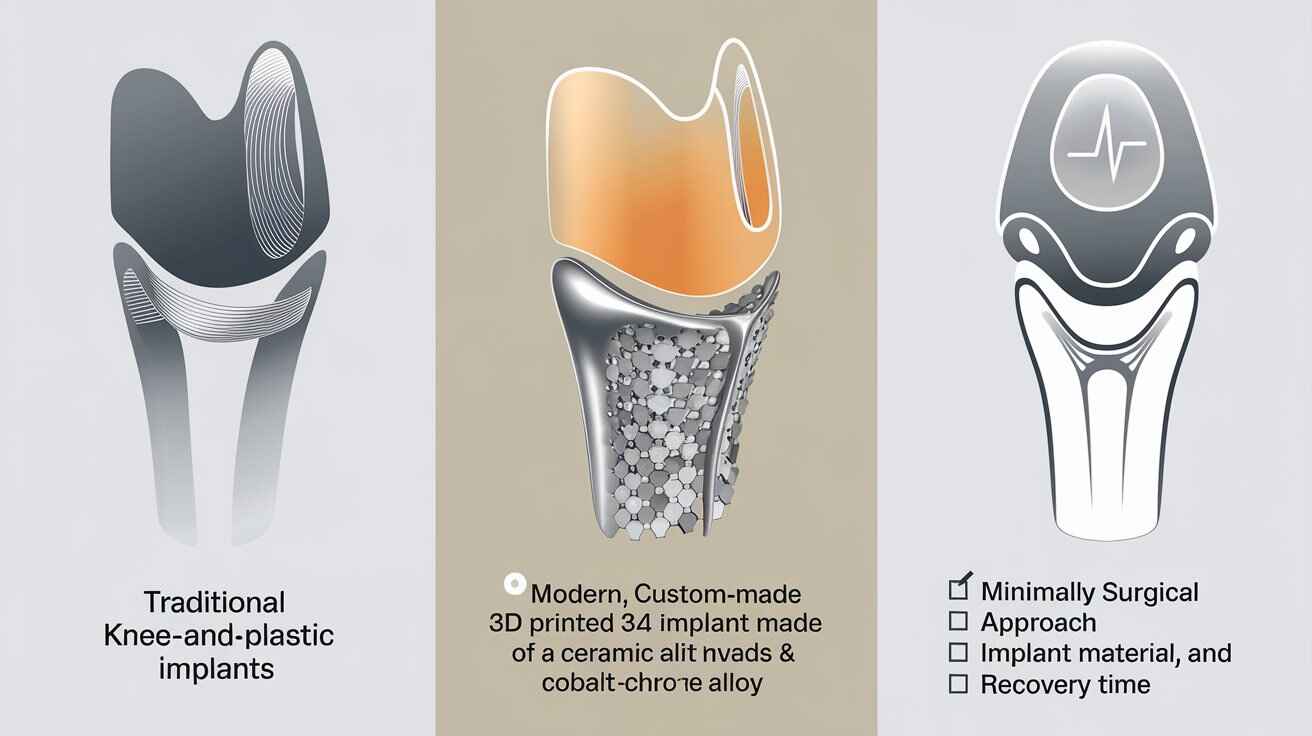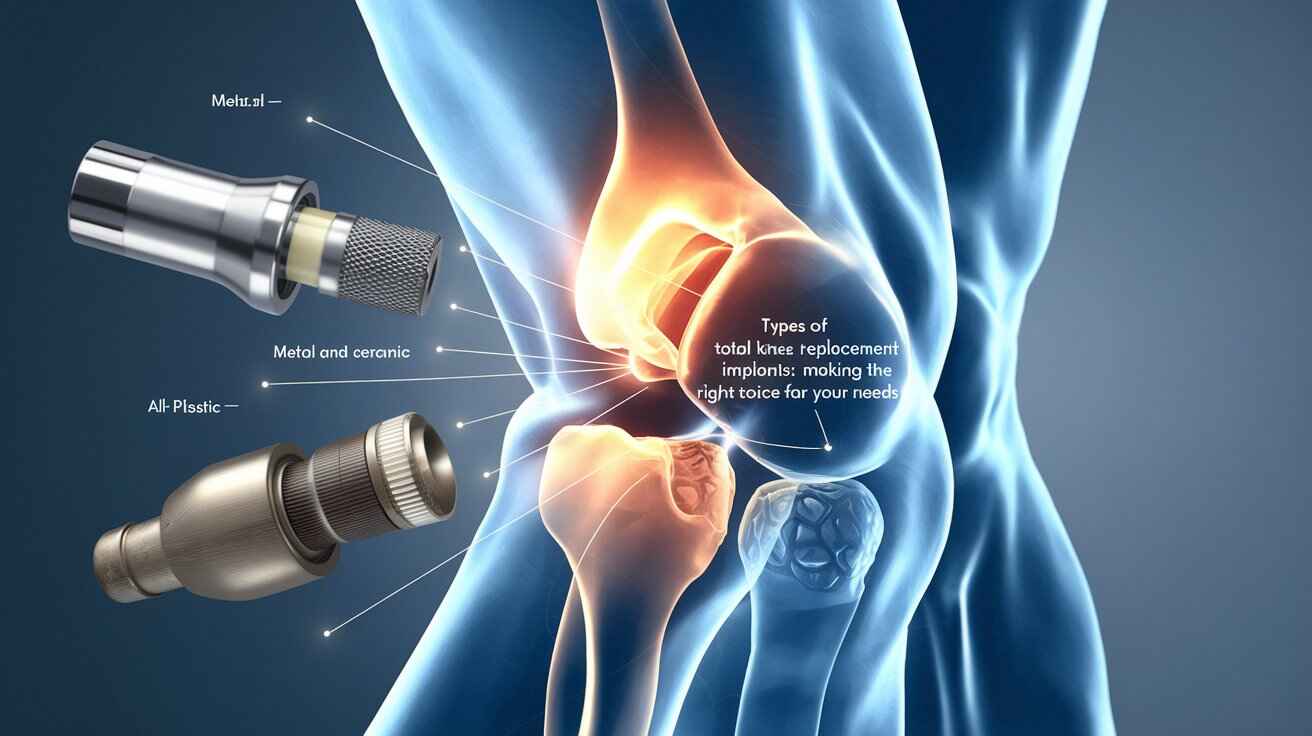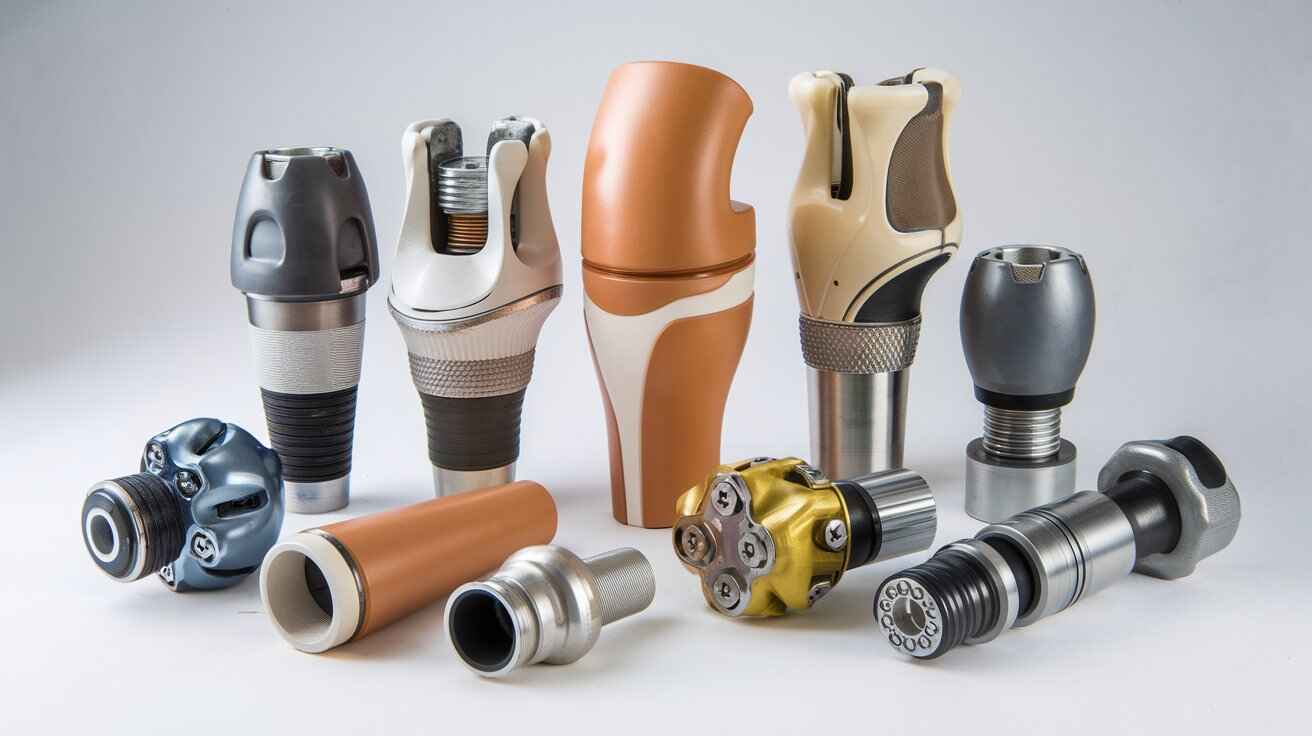Knee pain can significantly impact your quality of life, making everyday activities like walking, climbing stairs, or even sitting for extended periods uncomfortable or impossible. When conservative treatments no longer provide relief, a total knee replacement (TKR) may be recommended. But did you know there isn't just one standard implant used for all patients?
Modern knee replacement surgery offers several implant options, each with unique features designed to address specific patient needs. As an orthopedic specialist, Dr. Debashish Chanda believes that understanding these options is crucial for patients considering this life-changing procedure.
This comprehensive guide will walk you through the various types of total knee replacement implants available today, helping you understand the differences and benefits of each option so you can have an informed discussion with your surgeon about which might be best suited for your specific situation.
What is a Total Knee Replacement Implant?
A total knee replacement implant is a prosthetic device designed to replace the damaged surfaces of your knee joint. These implants are typically made from a combination of metal alloys, high-grade plastics, and polymer materials that are designed to withstand stress and mimic the function of a natural knee.
The standard knee replacement implant consists of three main components:
- Femoral component: A metal piece that resurfaces the end of your thigh bone (femur)
- Tibial component: A metal base plate attached to the top of your shin bone (tibia)
- Polyethylene insert: A plastic spacer that fits between the metal components and acts as cartilage
These components work together to recreate the smooth gliding motion of your natural knee joint, eliminating pain and restoring mobility.
Why Different Types of Knee Implants Exist

You might wonder why there are various types of knee implants rather than one standard solution. The answer lies in the complex and individual nature of knee problems:
- Different patients have different anatomical structures
- Activity levels vary significantly between patients
- Age and bone quality influence implant selection
- Specific knee conditions may require specialized solutions
- Surgical approaches and techniques may dictate implant choice
Dr. Chanda carefully evaluates each patient's unique situation before recommending a specific implant type. This personalized approach helps ensure optimal outcomes and patient satisfaction.
Major Types of Total Knee Replacement Implants
Fixed-Bearing Knee Implants
Fixed-bearing knee implants are the traditional and most commonly used type of knee replacement. In this design, the polyethylene insert is firmly attached to the tibial component.
Key features:
- The plastic spacer is permanently fixed to the metal tibial base
- Provides excellent stability
- Simpler design with fewer moving parts
- Long track record with predictable outcomes
- May be ideal for less active patients
Fixed-bearing implants have been used for decades with excellent results. They're particularly suitable for older patients or those with a more sedentary lifestyle who prioritize stability over a wide range of motion.
Mobile-Bearing Knee Implants
Mobile-bearing knee implants feature a polyethylene insert that can rotate or slide on the tibial component, allowing for additional movement.
Key features:
- The plastic spacer can rotate or move slightly
- May provide more natural knee motion
- Could potentially reduce wear and extend implant life
- May accommodate higher activity levels
- Requires good ligament support
This design aims to reduce stress on the implant interface while potentially allowing for more natural movement. Dr. Chanda might recommend this option for younger, more active patients who need a greater range of motion and want a long-lasting solution.
Posterior-Stabilized Knee Implants
Posterior-stabilized implants include a special mechanism that replaces the function of the posterior cruciate ligament (PCL), which is removed during surgery.
Key features:
- Contains a cam-and-post mechanism
- Provides enhanced stability
- Helps prevent the femur from sliding backward on the tibia
- May allow for greater flexion (bending)
- Commonly used when the PCL is damaged or removed
These implants are particularly beneficial for patients with significant deformities or those who need more support during knee flexion activities like climbing stairs.
Cruciate-Retaining Knee Implants
Cruciate-retaining implants are designed to preserve the patient's posterior cruciate ligament.
Key features:
- Preserves the natural PCL
- May provide more natural knee movement
- Requires less bone removal during surgery
- Might offer better proprioception (awareness of position)
- Suitable when the PCL is healthy and functional
Dr. Chanda may recommend this option if your PCL is in good condition and you desire a more natural feeling knee motion after surgery.
Bicompartmental Knee Implants
While not as common, bicompartmental implants replace just two of the three knee compartments (usually the medial and patellofemoral compartments), leaving the lateral compartment intact.
Key features:
- Preserves more of the natural knee
- Less invasive than total replacement
- May result in more natural knee function
- Faster recovery possible
- Suitable for specific patterns of arthritis
This option is only appropriate for select patients whose arthritis is limited to specific parts of the knee.
Unicompartmental (Partial) Knee Implants

Though not technically a total knee replacement, unicompartmental implants deserve mention as they replace only one compartment of the knee.
Key features:
- Replaces only the damaged portion
- Preserves healthy bone and tissue
- Less invasive surgery
- Typically faster recovery
- May feel more natural than a total replacement
Dr. Chanda might suggest this option if your arthritis is confined to just one area of your knee and the rest of the joint is healthy.
Materials Used in Knee Replacement Implants
The materials used in knee implants have evolved significantly over time, with each offering different benefits:
Metal Alloys
- Cobalt-chromium alloys: Highly resistant to wear and corrosion
- Titanium alloys: Lightweight and biocompatible, excellent for those with metal sensitivities
- Oxidized zirconium: A metal with a ceramic surface that offers reduced friction
Polyethylene (Plastic)
- Conventional polyethylene: Traditional plastic material
- Highly cross-linked polyethylene: Treated to improve wear resistance
- Vitamin E-infused polyethylene: Contains antioxidants to potentially extend implant life
Ceramic Components
- Less common but may offer benefits for certain patients
- May produce less friction and wear
- Potential option for patients with metal allergies
Dr. Chanda carefully selects materials based on each patient's age, activity level, allergies, and other factors to ensure optimal compatibility and longevity.
How to Choose the Right Knee Implant for You
While your surgeon will ultimately recommend the most appropriate implant based on their expertise, understanding the factors that influence this decision can help you participate more actively in your care:
Age Considerations
Younger patients (under 65) may benefit from:
- Mobile-bearing designs that accommodate higher activity
- More durable materials like highly cross-linked polyethylene
- Implants designed for longer wear
Older patients may do well with:
- Fixed-bearing designs that prioritize stability
- Conventional approaches with proven track records
- Simpler designs that allow for easier surgery and recovery
Activity Level
Your lifestyle and activities matter significantly:
- Highly active individuals: May benefit from mobile-bearing designs and advanced materials
- Moderately active individuals: Often do well with fixed-bearing implants with durable materials
- Less active individuals: May prioritize stability and simplicity over range of motion
Anatomical Factors
Your unique anatomy plays a crucial role:
- Bone quality and structure
- Ligament integrity
- Previous surgeries or injuries
- Degree and pattern of arthritis
- Presence of deformities
Surgical Approach
Different surgical techniques may influence implant selection:
- Traditional open surgery
- Minimally invasive approaches
- Computer-assisted navigation
- Robot-assisted procedures
Dr. Chanda's expertise in these various approaches allows him to pair the right surgical technique with the optimal implant for your specific needs.
The Importance of Surgical Expertise

While the implant type is important, the skill and experience of your surgeon are equally critical factors in determining the success of your knee replacement. Dr. Chanda brings extensive experience in various implant systems and surgical techniques, ensuring that each patient receives not just the right implant but also expert placement and alignment.
Research consistently shows that surgeon experience and surgical volume are strong predictors of positive outcomes in knee replacement surgery. Dr. Chanda's commitment to staying current with the latest advancements in implant technology and surgical techniques benefits his patients through:
- Precise implant placement
- Optimal soft tissue balancing
- Customized implant selection
- Comprehensive pre-operative planning
- Detailed post-operative care
Recovery and Rehabilitation
Regardless of the implant type chosen, recovery and rehabilitation are crucial components of successful knee replacement. Your recovery timeline and process may vary somewhat based on the implant type and surgical approach, but generally includes:
Immediate Post-Surgery (1-2 weeks)
- Pain management
- Initial physical therapy exercises
- Walking with assistance (walker or crutches)
- Prevention of complications
Early Recovery (2-6 weeks)
- Progressive increase in activities
- Transition to a cane if needed
- Continued physical therapy
- Gradually resuming light activities
Mid-Recovery (6-12 weeks)
- Further strengthening exercises
- Improved range of motion
- Decreased pain and swelling
- Return to most normal activities
Long-Term Recovery (3+ months)
- Continued strengthening
- Adapting to your new knee
- Potentially returning to low-impact sports
- Regular follow-up appointments
Frequently Asked Questions About Knee Implants
How long do knee implants last?
Modern knee implants typically last 15-20 years or longer. However, longevity varies based on implant type, patient activity level, weight, and other factors. Newer materials and designs aim to extend this lifespan even further.
Will I set off metal detectors with a knee implant?
You may set off metal detectors, depending on the sensitivity of the detector and the materials in your implant. It's helpful to carry a medical alert card or physician's note explaining your implant.
Can I be allergic to knee implants?
Yes, although rare, some patients have metal sensitivities, particularly to nickel, cobalt, or chromium. If you have known metal allergies, inform Dr. Chanda before surgery so appropriate materials can be selected.
Will my knee bend normally after surgery?
Most patients achieve 110-120 degrees of flexion after total knee replacement, which is sufficient for most daily activities. The type of implant, your pre-operative range of motion, and your commitment to rehabilitation all influence your final outcome.
Are there age restrictions for knee replacement?
There's no absolute age cut-off for knee replacement. The decision is based on pain levels, functional limitations, health status, and quality of life rather than age alone.
Conclusion: The Right Implant Makes a Difference
Choosing the right type of total knee replacement implant is a collaborative decision between you and your surgeon. While the technical aspects of implant selection are complex, understanding the basic differences between implant types can help you have more informed discussions with Dr. Chanda about your options.
Remember that the "best" implant is not universal—it's the one that best addresses your specific needs, considering your age, activity level, anatomy, and expectations. Modern knee replacement surgery offers a range of excellent options that can be tailored to your unique situation.
If you're considering knee replacement surgery, schedule a consultation with Dr. Debashish Chanda to discuss which implant type might be most appropriate for your situation. With the right implant, precise surgical technique, and dedicated rehabilitation, you can look forward to less pain and improved mobility for years to come.
Book Your Consultation Today
Are you suffering from knee pain that's limiting your activities and quality of life? Don't wait to seek help. Contact Dr. Debashish Chanda's office today to schedule a comprehensive evaluation and learn about your treatment options, including the various types of knee replacement implants that might be right for you.
Disclaimer: This article is for informational purposes only and does not constitute medical advice. Always consult with a qualified healthcare provider for diagnosis and treatment recommendations tailored to your specific condition.






